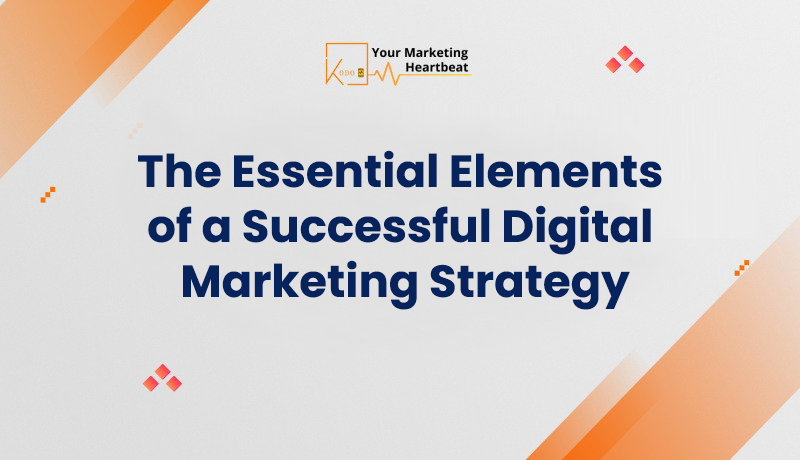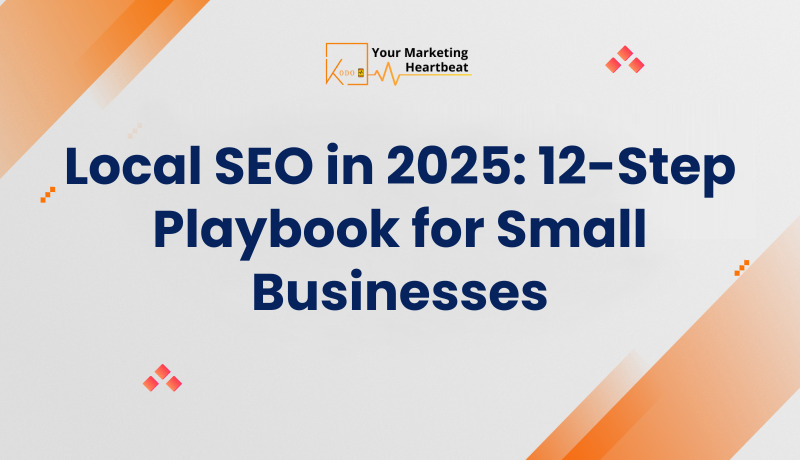
Creating a Strategy that Converts: A Deep Dive into Digital Marketing Essentials
In today’s digital-first world, having a solid digital marketing strategy is no longer optional—it’s a necessity for any business looking to thrive. A well-crafted digital marketing strategy not only helps you reach your target audience but also ensures that you engage them effectively, convert leads into customers, and ultimately, grow your business. However, with the plethora of channels, tools, and techniques available, building a successful digital marketing strategy can be daunting. This blog will explore the essential elements that make up a robust digital marketing strategy, helping you craft a plan that delivers results.
The foundation of any successful digital marketing strategy is having clearly defined goals and objectives. These should align with your overall business goals and provide a clear direction for your marketing efforts. Whether your objective is to increase brand awareness, drive more website traffic, generate leads, or boost sales, having specific, measurable, achievable, relevant, and time-bound (SMART) goals is crucial.
Your goals will serve as a roadmap, guiding your strategies, tactics, and decision-making processes. For example, if your goal is to increase website traffic by 20% in the next six months, your strategies might include content marketing, SEO, and social media campaigns focused on driving visitors to your site.
Large goals can feel daunting. Break them down into smaller, actionable steps. This creates a roadmap with achievable milestones, making the journey less overwhelming and progress more visible.
Additional Tip: Regularly review and adjust your goals based on performance data and market trends. This ensures that your strategy remains dynamic and responsive to changes in the business environment. For instance, if you notice that your current content strategy isn’t driving the expected traffic, it might be time to revisit your content formats or explore new distribution channels. By staying flexible and open to adjustments, you can continually refine your goals to align with the evolving needs of your business and audience.
Understanding your target audience is key to creating a digital marketing strategy that resonates with them. This involves more than just knowing their demographics; it requires a deep understanding of their needs, preferences, pain points, and behaviors. By developing detailed buyer personas, you can tailor your messaging, content, and campaigns to meet the specific needs of different segments of your audience.
Research your audience using tools like Google Analytics, social media insights, and customer surveys. Identify their preferred channels, content formats, and the type of messaging that resonates with them. The more you know about your audience, the more effectively you can engage them.
Additional Tip: Continuously update your buyer personas as you gather more data on your audience. Your understanding of your target audience should evolve with the market. For example, new trends, shifts in consumer behavior, or changes in purchasing patterns may require you to modify your marketing messages or explore new platforms. Regularly revisiting and updating your personas ensures that your campaigns stay relevant and continue to resonate with your audience, helping you maintain a competitive edge.
Content is at the heart of digital marketing. A strong content marketing strategy involves creating and distributing valuable, relevant, and consistent content to attract and engage your target audience. This includes blog posts, videos, infographics, podcasts, and more. The key is to create content that addresses the needs and pain points of your audience, positioning your brand as a trusted resource.
A successful content marketing strategy also involves planning your content calendar, optimizing content for search engines (SEO), and promoting your content across various channels. Consistency is key—regularly publishing high-quality content helps build trust and authority, ultimately driving more traffic and conversions.
Additional Tip: Incorporate different content formats to cater to the diverse preferences of your audience. By experimenting with videos, podcasts, infographics, and interactive content, you can engage different segments of your audience more effectively. For example, while some users may prefer in-depth blog posts, others might engage more with visual content like infographics or short videos. Diversifying your content approach not only broadens your reach but also enhances the overall user experience, increasing the likelihood of conversions.
Search engine optimization (SEO) is critical for ensuring your content is discoverable by your target audience. SEO involves optimizing your website and content to rank higher in search engine results, making it easier for potential customers to find you when searching for relevant keywords.
SEO is a long-term strategy that includes on-page optimization (such as keyword usage, meta tags, and content structure), off-page optimization (like backlink building), and technical SEO (ensuring your site is mobile-friendly, fast, and secure). By following best practices and staying up to date with algorithm changes, you can improve your website’s visibility, drive more organic traffic, and increase conversions.
Additional Tip: Regularly conduct SEO audits to identify and address areas for improvement. This involves analyzing your website’s technical aspects, such as page speed, mobile-friendliness, and security, as well as content factors like keyword usage and backlink quality. By performing audits, you can uncover issues that may be hindering your search rankings and take corrective actions promptly. Continuous optimization ensures that your website remains visible and competitive in search engine results, driving more organic traffic over time.
Social media platforms are powerful tools for building brand awareness, engaging with your audience, and driving traffic to your website. A successful social media marketing strategy involves selecting the right platforms for your brand, creating and sharing relevant content, and engaging with your audience in meaningful ways.
Each social media platform has its unique audience and best practices. For example, LinkedIn is ideal for B2B marketing, while Instagram and TikTok are better suited for visually driven content and younger audiences. It’s essential to understand the nuances of each platform and tailor your content and engagement strategies accordingly.
Additional Tip: Leverage social media analytics to gain deeper insights into your audience’s preferences and behavior. By analyzing metrics such as engagement rates, click-through rates, and audience demographics, you can fine-tune your content strategy to better resonate with your followers. For example, if you notice that your audience engages more with video content on Instagram, you can prioritize creating more videos. Regularly monitoring and adapting to these insights ensures that your social media campaigns remain relevant and impactful.
Email marketing remains one of the most effective channels for nurturing leads and driving conversions. It allows you to deliver personalized content directly to your audience’s inbox, keeping your brand top-of-mind and encouraging repeat business. A successful email marketing strategy involves segmenting your email list, personalizing your messages, and automating your campaigns.
Email segmentation allows you to send targeted messages based on user behavior, preferences, and demographics. This level of personalization can significantly increase open rates, click-through rates, and conversions. Additionally, automation tools can help you create drip campaigns, welcome series, and cart abandonment emails that nurture leads and drive sales.
Additional Tip: A/B test different elements of your email campaigns, such as subject lines, content, and design, to determine what works best for your audience. For example, you could test two versions of an email with different subject lines to see which one results in a higher open rate. By continuously testing and optimizing your emails, you can improve engagement rates and achieve better results from your email marketing efforts. Additionally, personalization based on user behavior or preferences can significantly enhance the effectiveness of your campaigns.
While organic strategies are essential, pay-per-click (PPC) advertising can provide immediate results by driving targeted traffic to your website. PPC involves placing ads on search engines, social media platforms, or other websites and paying a fee each time someone clicks on your ad. This strategy allows you to reach a highly targeted audience, increase visibility, and generate leads quickly.
Google Ads and Facebook Ads are popular platforms for PPC campaigns, offering advanced targeting options and detailed analytics. However, it’s crucial to have a clear understanding of your goals, budget, and target audience to optimize your PPC campaigns effectively.
Additional Tip: Continuously monitor and optimize your PPC campaigns to ensure they deliver the best possible return on investment (ROI). This involves regularly analyzing performance metrics, such as click-through rates, conversion rates, and cost-per-click, to identify which ads are performing well and which need adjustments. By tweaking your bids, refining your keywords, and improving your ad copy based on real-time data, you can maximize the effectiveness of your PPC campaigns and ensure that your advertising budget is being used efficiently.
Data-driven decision-making is crucial for the success of your digital marketing strategy. By regularly tracking and analyzing your performance metrics, you can gain valuable insights into what’s working and what’s not, allowing you to make informed adjustments to your strategy.
Google Analytics, social media insights, and other analytics tools can help you track key metrics such as website traffic, conversion rates, bounce rates, and more. These insights will guide your optimization efforts, helping you improve your campaigns and achieve better results over time.
Some businesses will always find ways to implement new technology trends, while others lag behind. For example, some companies immediately recognized the internet’s potential and built websites in the ’90s, while other businesses still operated without an online presence.
Data analytics is a rapidly expanding field poised for continued growth over the next decade. While businesses can function without data analytics tools, leveraging data can unlock significant benefits. In fact, by 2026, it’s predicted that 65% of companies will prioritize data-driven strategies to optimize performance and personalize offerings.
Additional Tip: Set up custom dashboards in your analytics tools to monitor key metrics in real-time. This allows you to quickly identify trends, spot potential issues, and make data-driven decisions on the fly. For example, if you notice a sudden drop in website traffic, you can immediately investigate and address the issue before it significantly impacts your performance. By always having a clear view of your data, you can be more proactive in optimizing your digital marketing strategy and improving your overall results.
Crafting a successful digital marketing strategy requires a holistic approach that combines clear goals, audience understanding, strong content, SEO, social media, email marketing, PPC, and data analytics. By focusing on these essential elements, you can create a strategy that not only reaches your target audience but also engages and converts them into loyal customers.
In today’s fast-paced digital landscape, staying agile and continually optimizing your strategy is key to staying ahead of the competition. Regularly revisiting and refining your strategy based on performance data, audience feedback, and market trends will ensure your digital marketing efforts remain effective and impactful. Remember, the most successful digital marketing strategies are adaptable, data-driven, and centered around your audience’s needs and preferences.



April 23, 2024